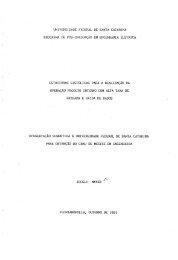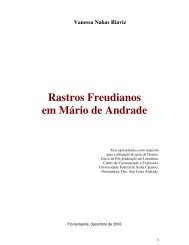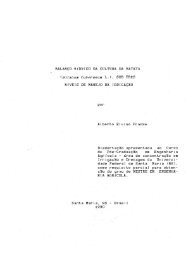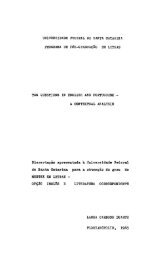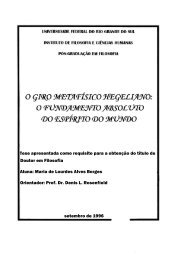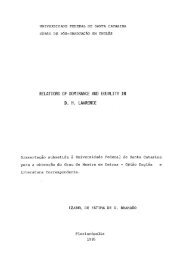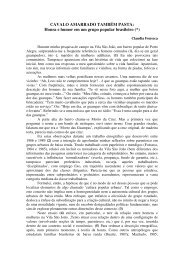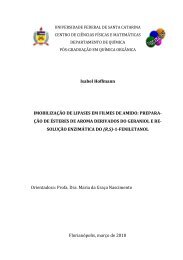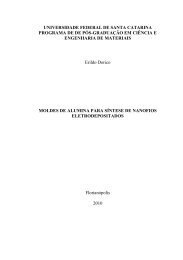T H E S I S
T H E S I S
T H E S I S
Create successful ePaper yourself
Turn your PDF publications into a flip-book with our unique Google optimized e-Paper software.
Chapter II<br />
PURITANISM DEFINED<br />
Historically the term "Puritan*1 was first used during the<br />
late 1560fs as a label for those Englishmen who urged that the<br />
English Church go further in the rejection of papal practices and<br />
beliefs. “Puritanism” really began with the formal separation of<br />
the English Church from Rome* under Kenry VIII, in 153*+, with the<br />
Act of Supremacy*5<br />
Some thirty years later, the most ardent reformers who were<br />
still attempting to complete, as they saw it, the work of “purifying"<br />
the English Church came to be designated, and to designate<br />
themselves, as "Puritans*1* Elizabeth I (1558-1603) was somewhat<br />
against .that big conflict about religious matters and under James I,<br />
who came to the throne in 1603, things got worse* For the Puritans<br />
and the repression drove many of them to exile, and it is<br />
well known how a Puritan colony settled in New England in 1620,<br />
because of that repression*<br />
Theologically Puritanism is based on the Calvinist doctrine<br />
which advocates the ultimate and complete authority of the Scriptures,<br />
the necessity of uniformity, the evil of toleration, and<br />
the responsibility and authority of the magistrates in matters<br />
of religion. Puritanism is further associated with the dogma of<br />
original sin, and a strict determinism which places salvation in



